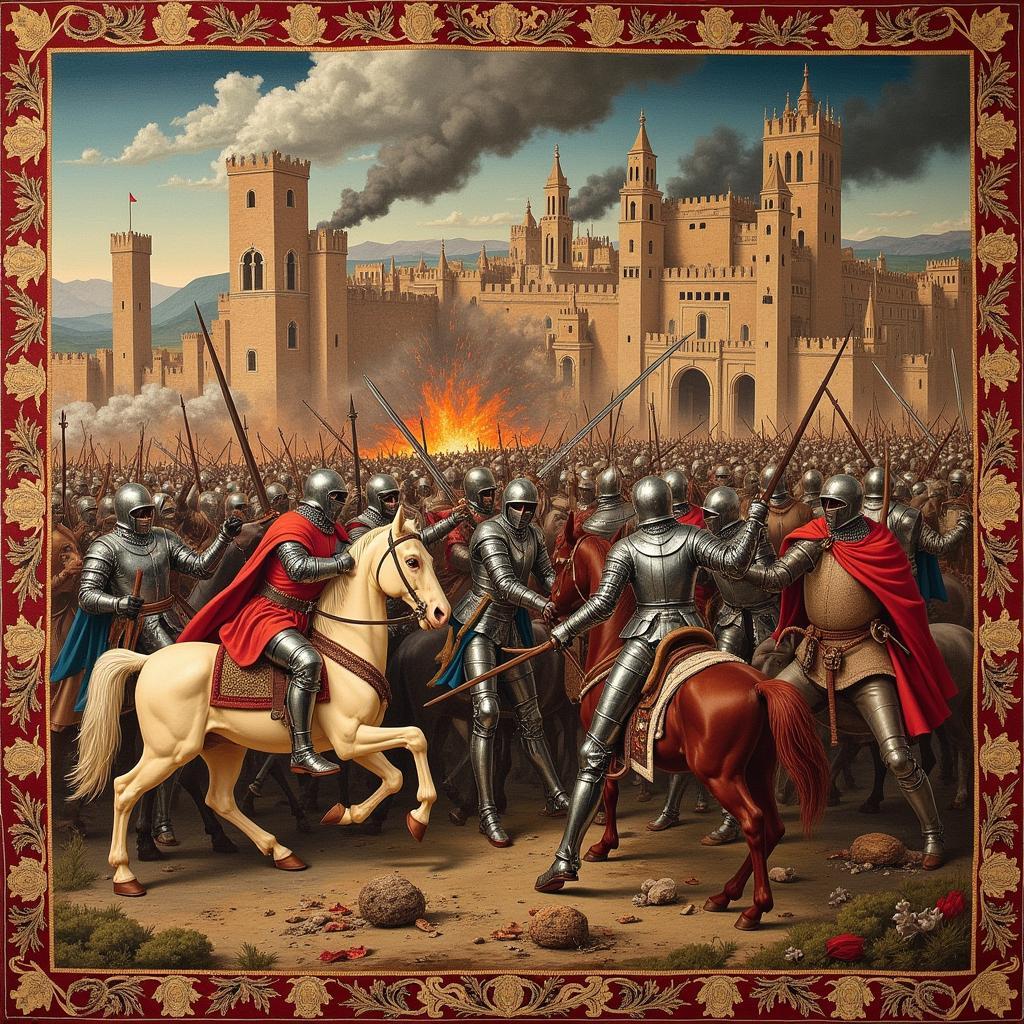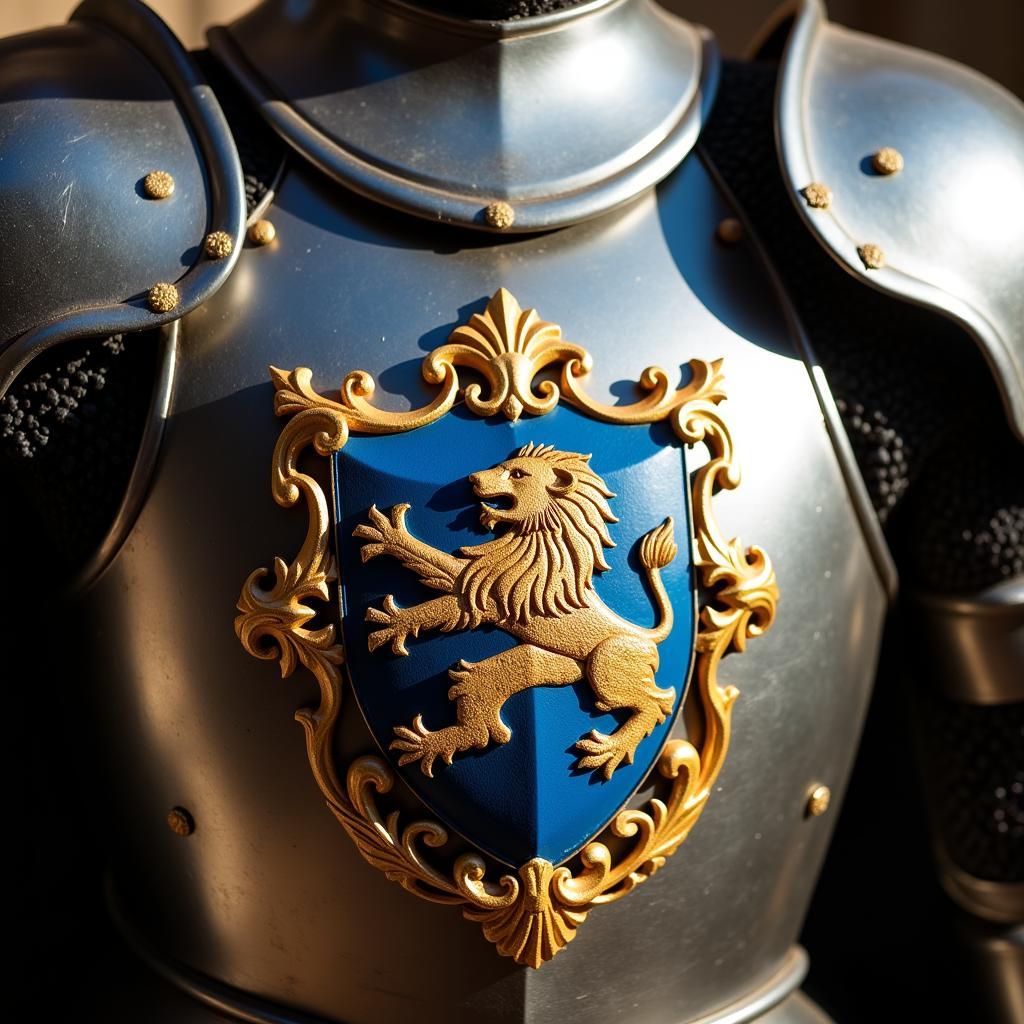Unlocking the Power of Medieval Military Art
Medieval Military Art, far from being simply decorative, provides a fascinating glimpse into the warfare, culture, and society of the Middle Ages. From illuminated manuscripts depicting epic battles to the intricate details of knights’ armor, this art form served both practical and symbolic purposes. This exploration delves into the diverse world of medieval military art, uncovering its historical context, analyzing its key elements, and examining its lasting impact on our understanding of the period.
The Function and Significance of Medieval Military Art
 Medieval Battle Scene Tapestry
Medieval Battle Scene Tapestry
Medieval military art transcended mere aesthetics, serving vital functions in a world dominated by warfare. Firstly, it acted as a visual record, documenting historical battles, military campaigns, and the evolution of weaponry and tactics. These artistic representations, often commissioned by rulers or nobles, served to commemorate victories, legitimize power, and shape the narrative of historical events.
Beyond historical documentation, medieval military art played a crucial role in military training and strategy. By depicting various battle formations, siege warfare techniques, and the use of different weapons, these artworks functioned as visual aids for knights and soldiers in training.
 Knight's Armor with Coat of Arms
Knight's Armor with Coat of Arms
Moreover, medieval military art served as a powerful tool for propaganda and psychological warfare. Depictions of fearsome warriors, invincible armies, and glorious victories instilled fear in enemies while bolstering morale among troops. The imagery often emphasized the might, valor, and righteousness of the commissioning party, reinforcing their authority and justifying their military actions.
Key Forms and Styles of Medieval Military Art
Medieval military art manifested in a diverse range of forms, each with unique characteristics and purposes. Illuminated manuscripts, often commissioned by wealthy patrons, documented historical events, military treatises, and chivalric romances. These manuscripts, adorned with vibrant colors, gold leaf, and intricate details, offer valuable insights into medieval warfare, weaponry, and the lives of knights and soldiers.
Another prominent form was the tapestry, large-scale woven textiles that depicted scenes of battles, sieges, and military processions. Tapestries, often displayed in castles and palaces, served as both decorative elements and powerful visual narratives, showcasing the wealth and power of their owners.
Sculpture also played a significant role, with effigies on tombs commemorating fallen warriors and equestrian statues celebrating victorious commanders. The design and ornamentation of armor, weapons, and other military equipment, often incorporating religious iconography, heraldic symbols, and intricate engravings, transformed functional objects into works of art.
The Enduring Legacy of Medieval Military Art
Medieval military art continues to captivate and inform us centuries later. It provides invaluable historical insights, offering glimpses into the realities of medieval warfare, the evolution of military technology, and the social and cultural norms of the period.
Beyond its historical value, medieval military art continues to inspire artists, writers, filmmakers, and game developers, influencing contemporary art, literature, and popular culture. From fantasy novels and video games to historical dramas and museum exhibitions, the imagery and themes of medieval military art continue to resonate with audiences worldwide.
FAQs
What is the most famous example of medieval military art?
The Bayeux Tapestry, depicting the Norman Conquest of England in 1066, is arguably the most renowned example of medieval military art.
How did medieval military art influence the development of heraldry?
The need to identify knights on the battlefield led to the development of heraldry, with shields and banners adorned with distinctive emblems and colors, reflected in medieval military art.
Did women feature in medieval military art?
While often relegated to secondary roles, women did appear in medieval military art, usually as mourners, peacemakers, or allegorical figures representing virtues like justice or victory.
Need Help Navigating the World of Art?
For guidance and support in your artistic journey, don’t hesitate to contact us:
Phone: 02462573573
Email: danteum@gmail.com
Address: Savico Megamall, 7-9 Đ. Nguyễn Văn Linh, Gia Thụy, Long Biên, Hà Nội 10000, Việt Nam.
Our dedicated customer support team is available 24/7 to assist you. You might also be interested in exploring our other resources, such as our in-depth article on coat of arms art, which provides valuable insights into the historical significance and artistic evolution of heraldic symbols.
